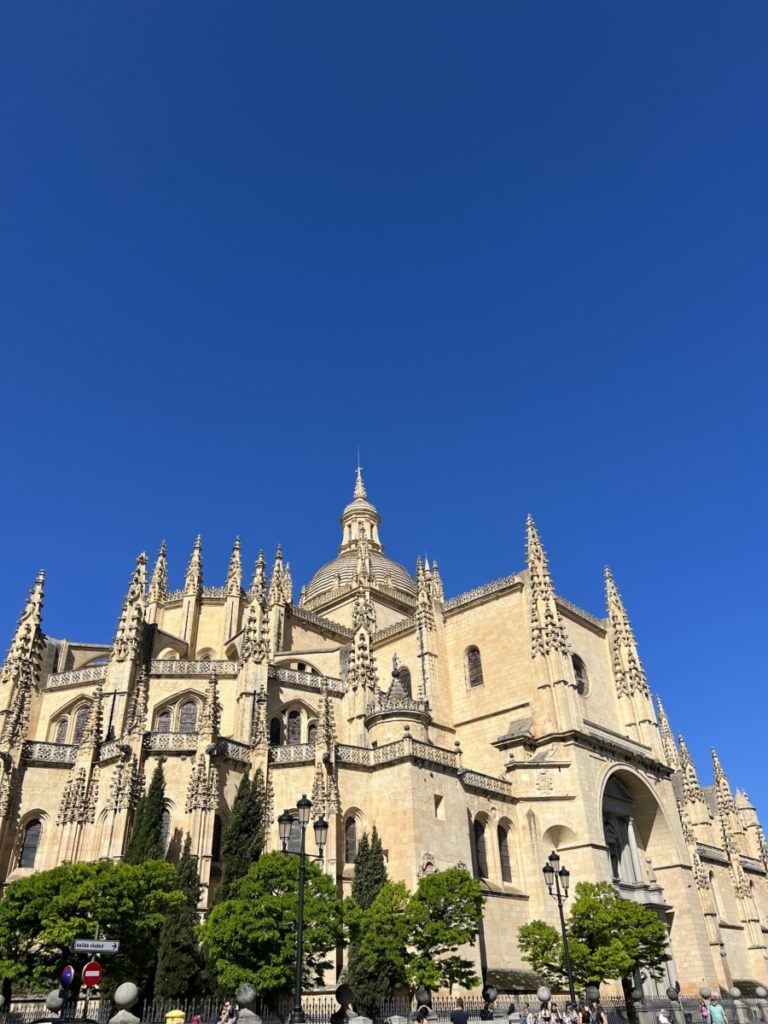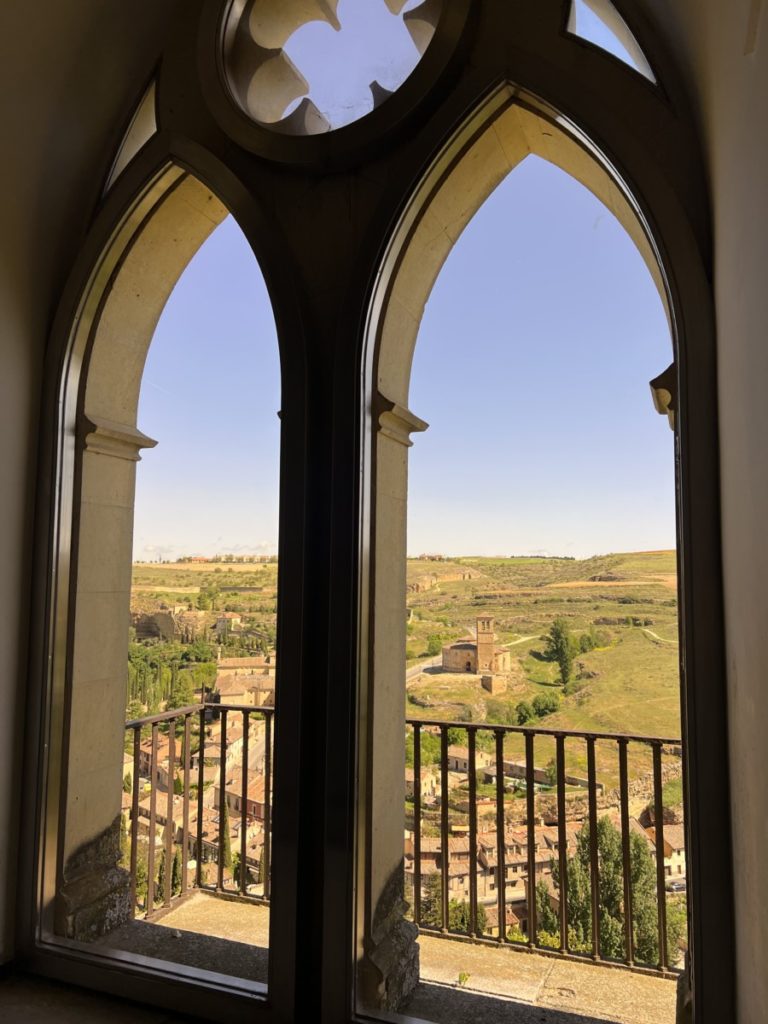My name is Avery Kanemasu, and I am a rising senior at the University of Georgia, majoring in Biological Sciences. I wanted to participate in the Spain: Food Production, Culture, and the Environment Maymester to broaden my worldview by experiencing Spanish culture firsthand. Through the exploration of southern Spain, I learned more about the various facets of Spanish agriculture, food production, and environmental sustainability, and I look forward to sharing some of my most memorable experiences with you all.
Segovia is a historic city northwest of Madrid with a rich architectural legacy, including medieval walls, Romanesque churches, a former royal palace, and a Gothic cathedral. We also saw the towering Roman aqueducts, constructed with two tiers and rows of 167 arches. We had a guided tour of the Alcazar de Segovia, a medieval castle with ornately decorated rooms and an armory museum. I learned that the name “Alcazar” is a word from the Arabic language that means palace. Thus, Alcazar de Segovia translates to a palace of Segovia. This stone fortress was beautiful. I was amazed by the ornamental ceilings and gallery of paintings. From the terrace, we had the most breathtaking view of the countryside, surrounding Segovia. My favorite room we got to explore was the Hall of Kings, filled with over 50 intricate portraits of various Spanish monarchs. The golden-plated statuettes encircled the upper part of the room. I had never seen anything like it.
After touring Alcazar de Segovia, we walked around the old town of Segovia and ate lunch at a local restaurant, where we had an amazing view of the Cathedral de Segovia. This majestic Gothic cathedral stands at the highest point. Inside the cathedral, we saw the magnificent sculptures, religious paintings, and altars that decorate the cathedral’s 20 chapels. The history of Segovia amazes me.


